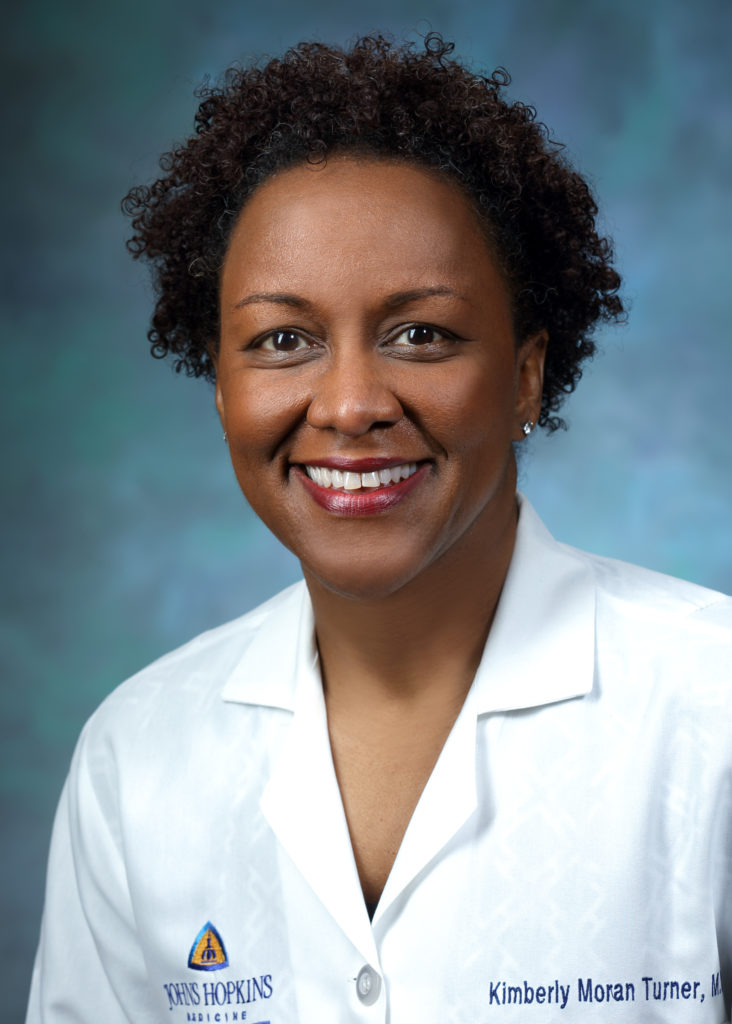Takeaway
A more diverse clinical workforce brings greater variety of perspectives in patient care which may improve clinical outcomes.

Lifelong Learning in Clinical Excellence | March 30, 2022 | 3 min read
By Kimberly Turner, MD, Johns Hopkins Community Physicians
We’re re-featuring this piece from 2022 today for Maternal Health Awareness Day 2025.
During the pandemic, many women were scared to conceive, much less deliver. And clinicians didn’t know how to advise pregnant women. To make matters worse, maternal morbidity has been rising in the U.S. even before the pandemic started. The World Health Organization (WHO) defines maternal death as the death of a woman while pregnant or within 42 days of the termination of the pregnancy from any cause. The CDC reports that in 2020, 861 women died of complications related to pregnancy as compared with 754 in 2019. The rates were 2.9 times higher in non-Hispanic Black women than in non-Hispanic white women. The rates of maternal death also increased in women over 40.
Our office shifted many visits to telemedicine in the beginning of the pandemic, even for pregnant patients. We were keeping close tabs on those pregnant women who had become infected with COVID-19 virtually. One such patient ended up on my schedule at the end of her pregnancy. As she described her COVID symptoms, she also described a few weeks of symptoms that were typical of preeclampsia. Because preeclampsia requires delivery in a full- term pregnancy, we brought her to the hospital for an induction of labor while she was actively infected with COVID-19. She was the first patient to deliver with COVID-19 at our community hospital and I was the attending physician for delivery. During this time, we weren’t allowing visits for patients with COVID-19, so this woman had to deliver without any family support. Her husband and parents joined the birth virtually.
The amount of time spent with a first-time mom in labor allowed me to listen to her perspective about her experience. She said that she’d complained of symptoms to other clinicians and couldn’t understand why I was so concerned. In reviewing her chart, I couldn’t find any notes of her discussing her symptoms with other providers. I soon figured out that she felt more comfortable talking to me as a fellow African American woman than she had felt with the other clinicians in my office. Her family thanked me again and again for being her “family” for this momentous event and were grateful that I was of the same ethnicity as their wife/daughter.
I left the delivery room exhausted both emotionally and physically. What in the world was going on that this woman thought she effectively communicated but wasn’t heard? Was it that she had only felt comfortable communicating with me?
I tell this story to let everyone know that my perspective on why the maternal mortality rate is increasing and that these rates are the highest among non-Hispanic Black woman is multi-faceted. We all know the data, but what can we do to help reduce these numbers?
1. Hire and train with diversity in mind.
The diversity of clinicians must reflect our population’s diversity.
2. Listen, listen, listen.
Listen and ask open-ended questions. Patients must feel comfortable discussing their concerns with all of their providers, regardless of their ethnicity and yours. Always assume there is a cause for a patient’s symptoms.
3. Have a systems approach to care.
In obstetrics we now have safety bundles. These include best practice and drills and training that we use in critical situations to reduce morbidity. By reducing morbidity, we will also, hopefully, reduce mortality.
4. Increase access to care.
We must be strategic in treating patients with poor access to care.
The pandemic highlighted so much about health disparities. We need to listen and validate patient concerns, hire and train the next group of diverse physicians in our specialties, and continue to pay attention to protocols that will ultimately reduce rates of mortality.
This piece expresses the views solely of the author. It does not necessarily represent the views of any organization, including Johns Hopkins Medicine.

